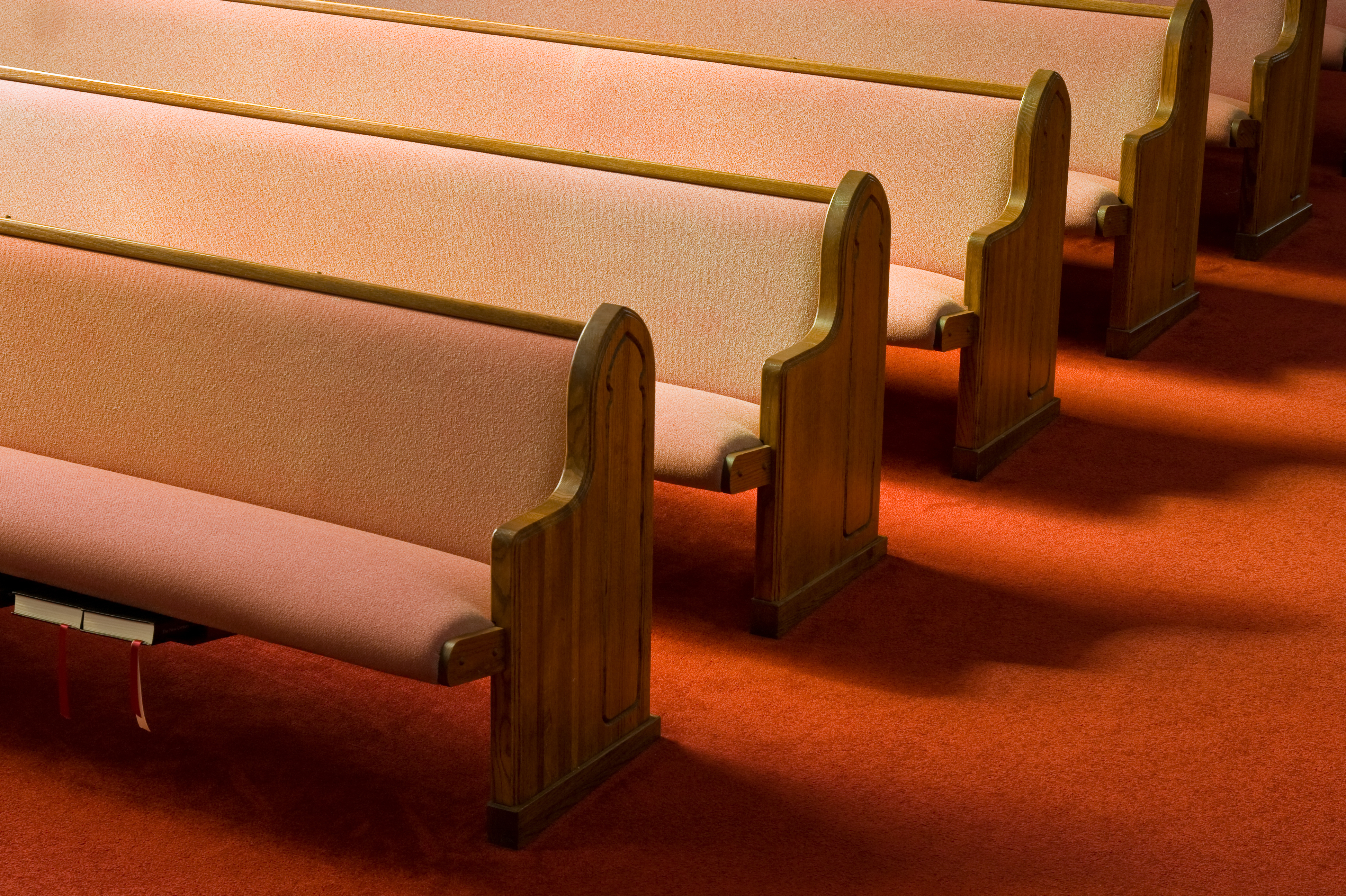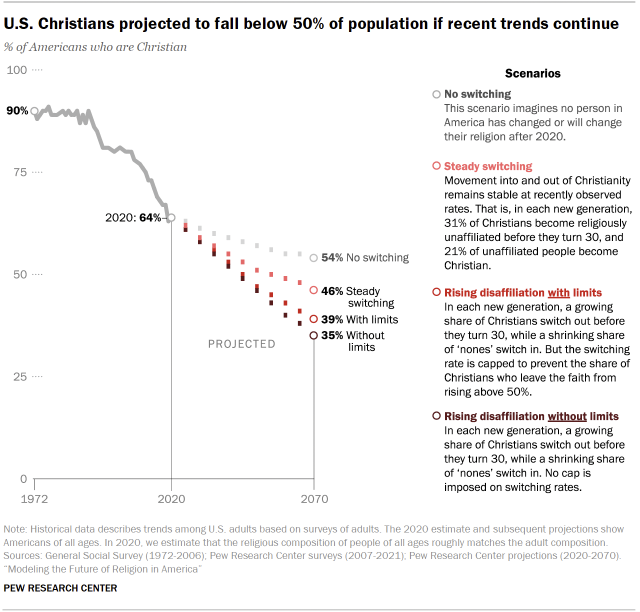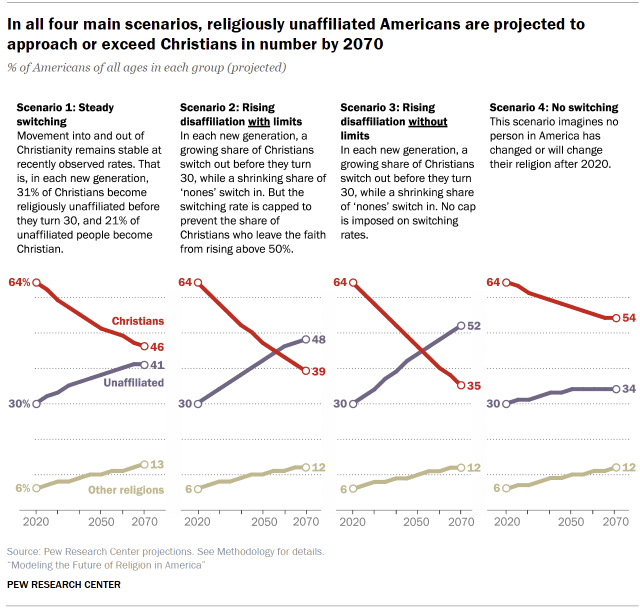
A new study modeled four scenarios for how religious affiliation could change in the U.S., and it projected that the percentage of people with no religious affiliation will rise.
DiggPirate/Getty Images
Eliza Campbell had spent her entire life as a practicing member of the Church of Jesus Christ of Latter-day Saints.
She was born in Utah, a state in which the majority of residents belong to the church, and attended Brigham Young University, a private institution owned and operated by the church.
"It's part of your whole professional network, your whole emotional community," she said. "Basically, it touches every facet of your life."

Eliza Campbell said she started thinking about disaffiliating from the Church of Jesus Christ of Latter-day Saints around age 20, but it took years to formally leave the church.
Eliza Campbell
Then, two years ago, after nearly three decades, Campbell left the church.
She is one of a growing number of Americans who were raised Christian but are disaffiliating from the religion.
America’s Christian majority is facing steep declines
Christianity remains the majority religion in the United States, as it has been since the country's founding, but it's on the decline.
A new study from the Pew Research Center shows that America's Christian majority has been shrinking for years, and if recent trends continue, Christians could make up less than half the U.S. population within a few decades.
The study found that Christians accounted for about 90% of the population 50 years ago, but as of 2020 that figure had slumped to about 64%.
"If recent trends in switching [changing one's religious affiliation] hold, we projected that Christians could make up between 35% and 46% of the U.S. population in 2070," said Stephanie Kramer, the senior researcher who led the study.
The study modeled four scenarios for how religious affiliation could change, and in every case it found a sharp drop in Christianity.
While the study does not grapple with the question of why Christians are disaffiliating from their religion, Kramer said there are some theories that could help explain this phenomenon.
"Some scholars say that it's just an inevitable consequence of development for societies to secularize. Once there are strong secular institutions, once people's basic needs are met, there's less need for religion," Kramer said.
"Other people point out that affiliation really started to drop in the '90s. And it may not be a coincidence that this coincides with the rise of the religious right and more associations between Christianity and conservative political ideology."
For Campbell, conflict between the teachings of her faith and her own personal identity and values were at the core of her decision to leave.
"For me, especially, when I started to come out as queer, it became impossible for me to reconcile this church that was basically admitting that they wanted kids like me dead or suicidal," she said. "I decided I had to choose myself and choose my well-being."
“Religiously unaffiliated” could become the majority
Alongside Christian numbers in the U.S. trending down, the Pew study also found that the percentage of people who identify as "religiously unaffiliated" is rising and could one day become a majority.
"That's where the majority of the movement is going," Kramer said. "We don't see a lot of people leaving Christianity for a non-Christian religion."
Importantly, Kramer said, "religiously unaffiliated" is not synonymous with atheist, as the term also includes those who identify as "agnostic," "spiritual" or "nothing in particular."
In the four scenarios that Pew modeled, Americans who were religiously unaffiliated were projected to approach or overtake Christians in number by 2070. At the same time, the percentage of those following other religions was expected to double.
"It's almost what I expect," Hasan Tauha, a student at Stanford University, said of the rising numbers of religiously unaffiliated people in the United States.
"I don't think it's surprising. I think it's a product of modern comforts. I think when life is good, when it's better, you know, religion is just not as important."
Tauha was not raised Christian. He spent most of his life as a devout Muslim but decided four years ago to leave his religion, and he now identifies as atheist.

At one point, Hasan Tauha considered becoming an imam and even attended a seminary school. However, he says that studying history, philosophy and other subjects opened his mind to question his faith.
Hasan Tauha
Like Campbell, Tauha's process of turning away from his faith was not just a matter of changing his beliefs; it involved disconnecting with the religious community he had been involved with for his entire life.
"The process of leaving the faith, for me, was kind of torturous," he said. "[But] I look back on my experience and leaving the faith as something generally productive and positive. In fact, I'd say it remains the formative experience in my life [and] gave me a new sense of direction. So I look back on it fondly."
Copyright 2022 NPR. To see more, visit https://www.npr.org.

